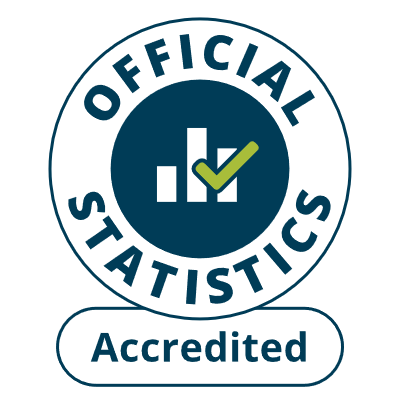
 Enrolments of students from Wales by subject, level and mode of study - Archived – No longer updated
Enrolments of students from Wales by subject, level and mode of study - Archived – No longer updated
None
|
|||||||||||||||||||||||||||||||||||||||||||||||||||||||||||||||||||||||||||||||||||||||||||||||||||||||||||||||||||||||||||||||||||||||||||||||||||||||||||||||||||||||||||||||||||||||||||||||||||||||||||||||||||||||||||||||||||||||||||||||||||||||||||||||
Metadata
- High level information
- Weblinks
- Statistical quality information
- Keywords
- Summary information
- Open Data
Title
Enrolments of students from Wales by subject, level and mode of studyLast update
16th January 2020Next update
Last update: 16th January 2020Publishing organisation
Welsh GovernmentSource 1
Higher education student record, Higher Education Statistics AgencyContact email
post16ed.stats@gov.walesDesignation
National StatisticsLowest level of geographical disaggregation
United KingdomGeographical coverage
United KingdomLanguages covered
English and WelshData licensing
You may use and re-use this data free of charge in any format or medium, under the terms of the Open Government License - see http://www.nationalarchives.gov.uk/doc/open-government-licenceStatistical quality
Enrolments on HE courses at Welsh FEIs funded by HEFCW are reported here fromNumbers for students from Wales studying at the Open University are based on where the student is from, rather than on the campus marker selected by the university. HESA use a different method to this and so the published numbers may differ slightly.
Note that the 'Welsh for Adults' StatsWales information normally included as part of this release cannot be updated to 2016/17. The National Centre for Learning Welsh has been responsible for providing leadership to the Welsh for Adults programme and co-ordinating provision across Wales on behalf of Welsh Government from 2015. Part of the work of the Centre has been to rationalise provision, and data systems, from 2016/17 onwards (with data collection in the past taking place through both HESA and LLWR data). New arrangements for data collection are being established for 2017/18 onwards, however, data has not been collected to provide a complete picture of provision for the 2016/17 year and it will not be included at all from 2017/18 onwards.
2016/17 onwards. Previously they were reported through the Lifelong Learning Record for Wales (LLWR)
From 2010/11, Further Education (FE) students who were enrolled at Merthyr Tydfil College, Glamorgan were reported to HESA rather than solely to the Lifelong Learning Wales Record (LLWR). In 2009/10 only 950 FE enrolments were registered at Merthyr Tydfil College (as part of Glamorgan University), whilst in 2011/12 the number of FE enrolments was 8,580. The new protocol affecting 2012/13 data meant that the number of these enrolments fell again to 1,850 in 2012/13.
University of Wales Institute, Cardiff changed its name to Cardiff Metropolitan University in late 2011.
In 2009/10, the University of Glamorgan changed its reporting practices for a number of their full-time postgraduate taught students that were active over two reporting years. These students were previously returned as active in their first year but dormant in their second year. For 2009/10 these students are now returned as active in both academic years, in line with HESA reporting requirements. This contributed to Glamorgan reporting an increase of 670 enrolments (around 58 per cent) to its full-time postgraduate taught courses and a subsequent rise in the number of full-time postgraduate enrolments at Welsh HEIs.
In 2008/09, Lampeter University showed a drop of 2,195 part-time other undergraduate enrolments, representing a 39 per cent decrease on 2007/08. This was, in part, due to those students being re-coded as dormant which automatically excluded them from enrolment data.
During 2009/10, Bangor University took part in a trial with an external partner in relation to a large set of their Welsh for Adults data (Further Education enrolments normally included on the HESA record). Due to the nature of the trial, some data was not available before the HESA submission deadline, this resulted in an undercount for that year. In 2011/12 Bangor University recorded a 112 per cent increase in FE enrolments since 2009/10; currently there is no reason to suggest that this is due to anything other than full reporting and increased provision.
Keywords
Higher EducationGeneral description
Last update: 16th January 2020Data collection and calculation
Source: Higher Education Statistics Agency (HESA) Student Record.Contact: post16ed.stats@gov.wales
Frequency of publication
AnnualData reference periods
The HESA standard registration population is a count of all enrolments within the reporting year 1 August to 31 July. Students who leave within 2 weeks of their start date, or anniversary of their start date, and are on a course of more than two weeks duration, are not included in the standard registration population. Dormant students, incoming visiting and exchange students from overseas and students studying for the whole of their programme of study outside of the UK are also excluded from this population.Rounding applied
The presentation of figures in this table follows the principals of the HESA rounding strategy. The strategy is intended to prevent the disclosure of personal information about any individual. This strategy involves rounding all numbers to the nearest 5. A summary of this strategy is as follows:• 0, 1, 2 are rounded to 0 and represented as '*'.
• All other numbers are rounded to the nearest 5








